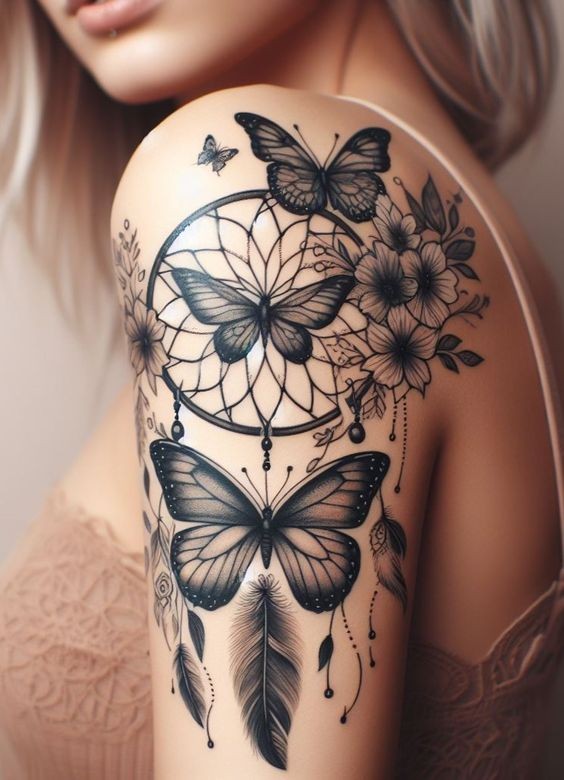Dream Catcher Tattoos: A Timeless Symbol – Its Meaning & Mysteries
Dream catcher tattoos have surged in popularity over recent years, with their intricate designs and deep symbolism captivating a wide range of people. These tattoos, rooted in Native American culture, represent a timeless symbol with rich meaning and a touch of mystique. Here, we explore the origins, significance, and allure of dream catcher tattoos.
Origins of the Dream Catcher
The dream catcher, a traditional Native American artifact, originated with the Ojibwa (Chippewa) people. According to legend, the dream catcher was a protective talisman designed to filter out bad dreams and allow only positive ones to pass through. Traditionally, dream catchers were crafted from a circular frame, often adorned with a woven net or web in the center, and decorated with feathers and beads. Each element of the dream catcher held symbolic meaning, with the circle representing the cycle of life and the web symbolizing the filtering of dreams.
The Meaning Behind the Symbol
In its traditional form, the dream catcher’s primary function was to protect the sleeper from negative dreams and bad spirits. It was believed that the web would trap bad dreams and allow only good dreams to pass through the holes, descending gently through the feathers to the dreamer. The feathers were thought to represent the breath of life, carrying dreams down to the dreamer’s slumber.
When translated into tattoos, the dream catcher retains much of its original symbolism. A dream catcher tattoo can serve as a personal talisman, offering protection and positive energy to the wearer. It can symbolize the wearer’s desire to filter out negativity and embrace positive influences in their life.
The Allure of Dream Catcher Tattoos
Dream catcher tattoos are not only valued for their protective symbolism but also for their aesthetic appeal. The design offers a blend of geometric precision and natural beauty, with the web-like pattern and delicate feathers creating a visually captivating piece. Artists often infuse dream catcher tattoos with vibrant colors, intricate details, and personalized elements, making each tattoo a unique work of art.
Mystical and Modern Interpretations
In contemporary culture, dream catcher tattoos have evolved beyond their traditional meanings. While many people still choose them for their protective qualities, others are drawn to their beauty and the personal significance they can hold. Some may use dream catchers as symbols of their aspirations and dreams, reflecting their goals and ambitions.
Moreover, dream catcher tattoos can be customized to reflect the wearer’s unique journey. Incorporating elements like names, dates, or personal symbols into the design can turn the tattoo into a deeply personal statement. For example, some might choose to include feathers that symbolize important life events or add colors that hold personal significance.
Cultural Sensitivity and Respect
It’s essential to approach dream catcher tattoos with cultural sensitivity and respect. The dream catcher is a sacred symbol within Native American cultures, and its appropriation should be handled thoughtfully. Those considering a dream catcher tattoo should be aware of its cultural origins and the significance it holds for Native American communities. Acknowledging and respecting this heritage can lead to a more meaningful and respectful use of the symbol.
Conclusion
Dream catcher tattoos are more than just a trend; they are a symbol rich with history and meaning. Whether chosen for their aesthetic appeal, protective qualities, or personal significance, these tattoos offer a way for individuals to connect with a timeless tradition. By understanding the origins and symbolism of dream catchers, wearers can appreciate and honor the depth of this powerful symbol.






